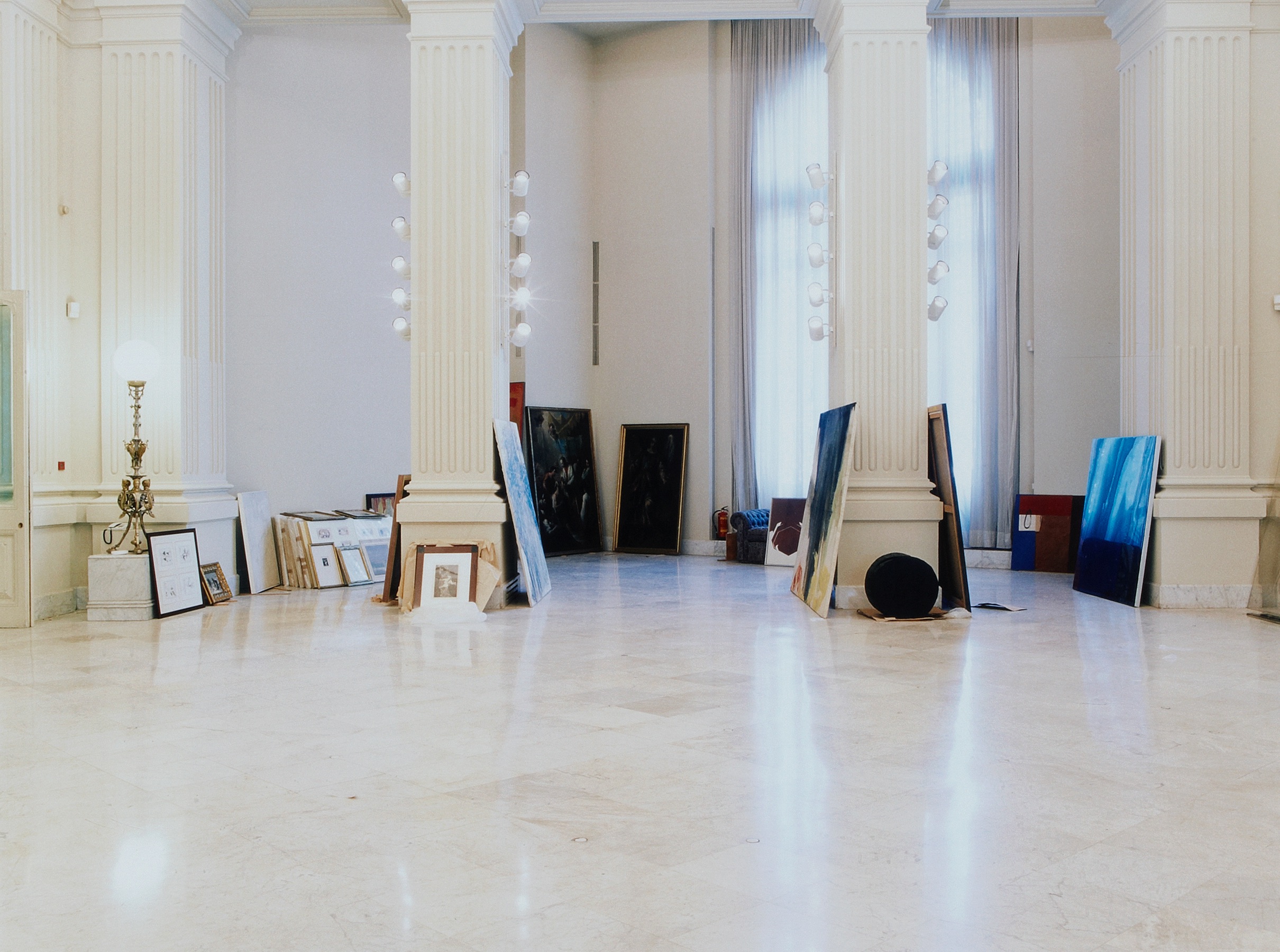(UN)COMMON VALUES
The link between art and its value has long fascinated people. From a financial viewpoint, one can speculate as to the future value of contemporary art. However, art collections held by financial organisations, especially public institutions, are grounded on a different ethos.
Fifty years of operations is a landmark for the art collection of the National Bank of Belgium (NBB)![]() . Developing a collection coherently so that it evolves along with the bank itself over time is a long-term responsibility. The same can certainly be said of the Banco de España (BDE), which has been a patron of the arts for over 240 years. Investment in creative art works has long been a burning issue. Institutional collections are all too often valued in terms of financial figures when their main driver is actually a commitment to society. Support for artists is not limited to purchasing their works; that is just the start of a lasting relationship in which conservation is a fundamental concern.
. Developing a collection coherently so that it evolves along with the bank itself over time is a long-term responsibility. The same can certainly be said of the Banco de España (BDE), which has been a patron of the arts for over 240 years. Investment in creative art works has long been a burning issue. Institutional collections are all too often valued in terms of financial figures when their main driver is actually a commitment to society. Support for artists is not limited to purchasing their works; that is just the start of a lasting relationship in which conservation is a fundamental concern.
The goal of (Un)common Values is to acknowledge the intrinsic value of art. The NBB and the BDE are staging a retrospective that looks back over 50 years of creative art in a rapidly changing society, through works by over 40 artists of international renown. The underlying idea is that art works are interlocutors with whom we can examine today's paradigms and ideologies. They are not static objects, but rather call into question and validate values.
The exhibition focuses on three main ideas. Matters of Exchange looks in depth at art as the bearer of desire. I Contain Multitudes explores the concepts of diversity and inclusion. And finally, Paix/Prix focuses on challenging topics that keep us all on our toes. As an introduction to the exhibition, All About You by Olivia Hernaiz invites us to reflect with gentle humour on the position of consumers and how they can be seduced by marketing.
The National Bank of Belgium and the Banco de España present a selection of works from their contemporary art collections. The exhibition brings to light the similarities between them, while also highlighting the uniqueness of each. Together we are taking a look at the way in which we regard art and discovering some unexpected connections and perceptions.

Jonathan Monk. This Painting Should Be Installed by an Accountant (2011). Banco de España Collection
MATTERS OF EXCHANGE
The artistic power of matter (from precious stones and gold to ash and dust) is something that affects us all. Gold has been an important feature throughout the history of art, from Giotto to James Lee Byars, due to its mystical nature, which is enhanced by the convergence of its colour and the material itself. In This Painting Should Be Installed by an Accountant, Jonathan Monk goes to the heart of the issue: when does an object become a work of art? Is it accorded that status because of the technique used or because it represents an innovative concept? Is it down to authenticity or to the quality of the material used? Or does an object become a work of art because of the life of the artist or because the curator says so? In art there is no single right answer.
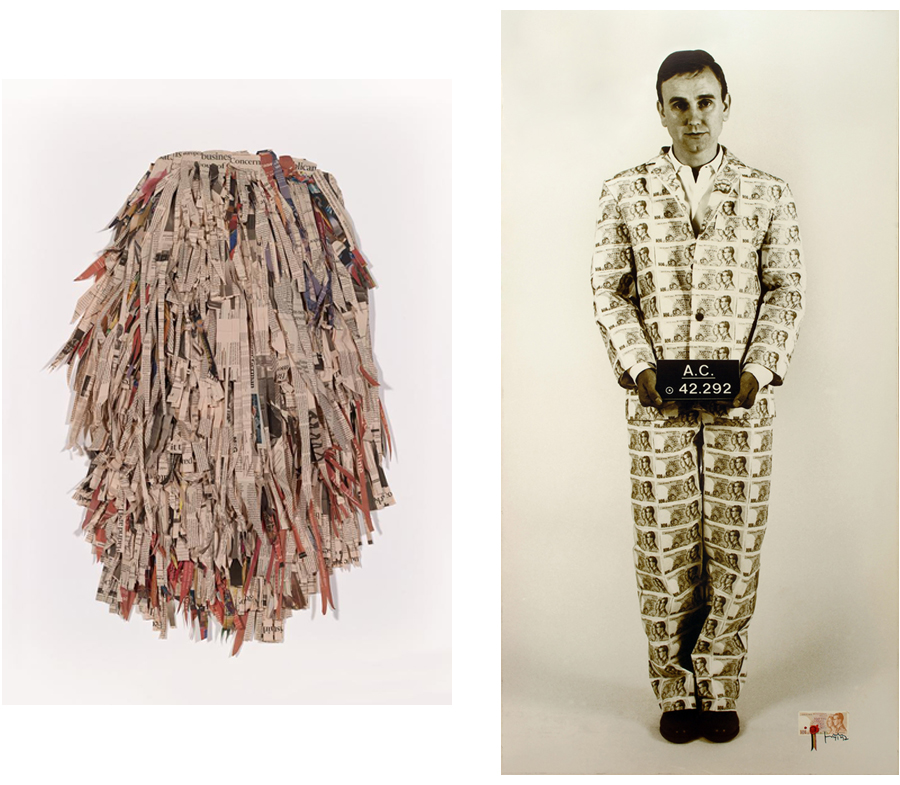
Sara Ramo. Contract, 2016. Banco de España Collection | Guy Bleus. Value Shredder-Demonetization, 1982. Collection of the National Bank of Belgium
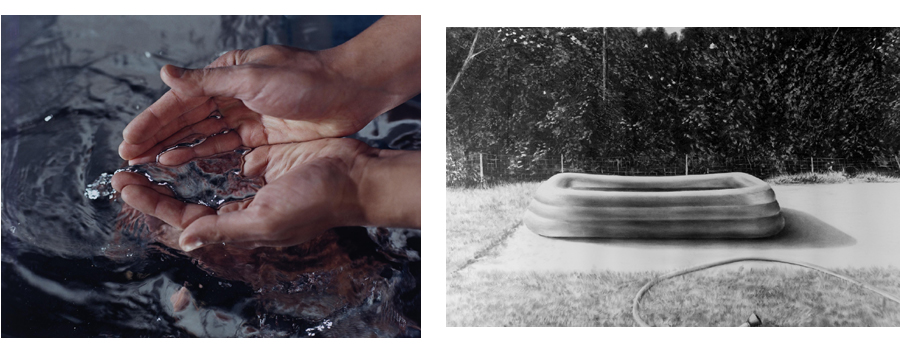
João Maria Gusmão & Pedro Paiva. Mercury (2009). Banco de España Collection | Charles-Henry Sommelette. Terme, 2015. Collection of the National Bank of Belgium
Works of art can be thought of as bearers of desire; they reflect our internal conversations, our obsessions and our beliefs. They instantly convey the intention of the artist in the context of a society such as ours, which is changing rapidly. But gold is not the only material laden with symbolic meaning in art. Artists turn their ideas into expressive objects, sometimes using the most unexpected materials, and are forever searching for the most suitable material to work with. Matters of Exchange explores the process of creation, the practice of art, the position of artists in the world of art and the extent to which material concerns condition our dreams and expectations.

Francesc Ruiz. Marking (2016). Banco de España Collection
I CONTAIN MULTITUDES
The individuality of a human being can take many forms. Or at least that is the message conveyed by Bob Dylan in his song I Contain Multitudes. Artists are capable of discovering new ways of observing, of incorporating new voices to explore multiple facets of their own identities and those of others. When artists interpret universal issues they seek to grasp the essence and the fragility of human existence. This is a condition that all living beings share. Self-knowledge, the ability of an individual to shed their skin and slip into another that leaves them better able to face what the future holds is a process that never ends.
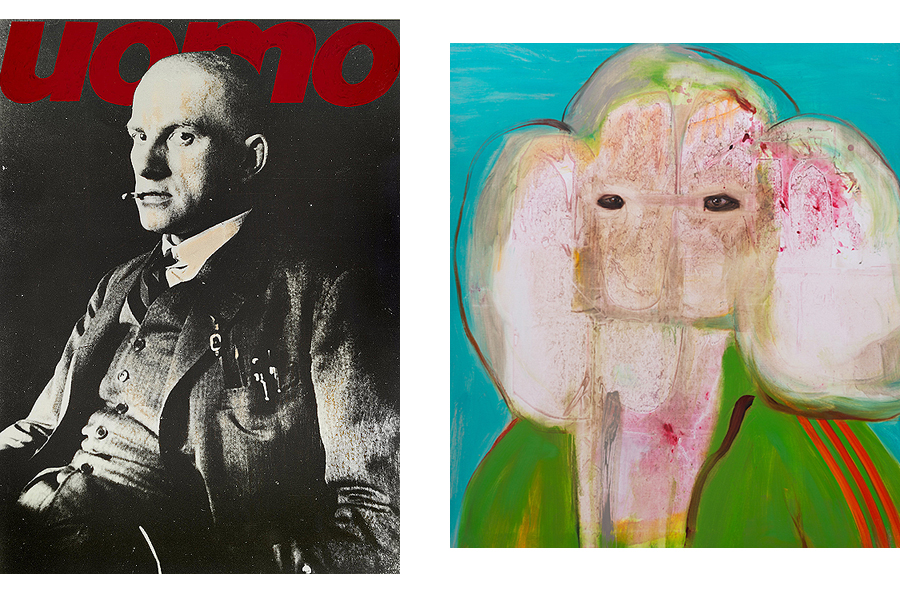
Rogelio López Cuenca. Uomo (Maiakovski) [1992]. Banco de España Collection | Emilio López-Menchero. 'Cabezudo' Mona Lisa, 2015. Collection of the National Bank of Belgium

Helena Almeida. Seduzir (2002). Banco de España Collection | Carmen Dionyse. Kwadraatbuste, 1981. Collection of the National Bank of Belgium
I Contain Multitudes brings together works that question who we are as individuals and as social animals in a community grounded on economic, social and psychological histories. In Marking, Francesc Ruiz looks at the portraits featured on old Spanish banknotes and wonders about the familiar faces that were passed continually from hand to hand. These faces form part of the collective imagination, but the individuality of the people portrayed seems to fade when they are reproduced endlessly.
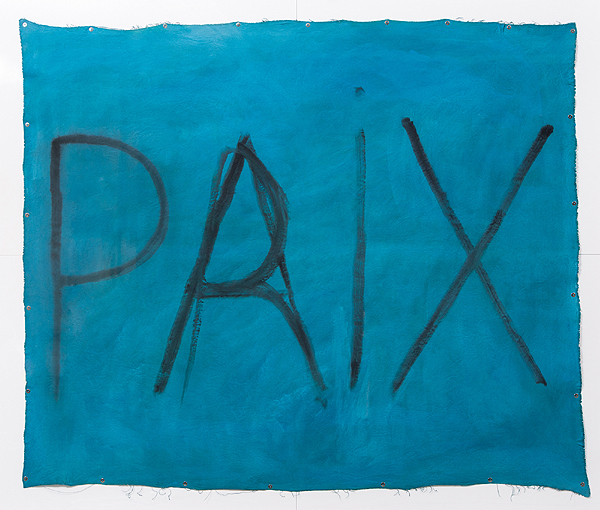
Pol Pierart. Paix/Prix, 2003. Collection of the National Bank of Belgium
PAIX/PRIX
Images leave their mark, but so do words. They provoke all manner of emotions, from joy to sadness, are catalysts for a range of (re)actions and have the ability to bring order or generate chaos. Using two elementary, symbolic words that differ in just one letter, Pol Pierart presents the public with a puzzle.
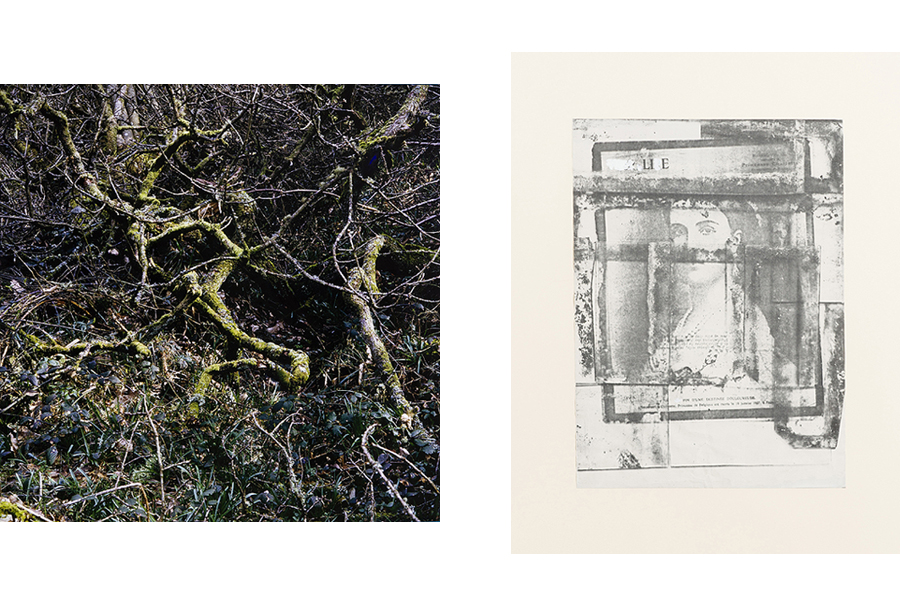
Willie Doherty. Beneath the Surface I (1999). de España Collection | Jacqueline Mesmaeker. Les Charlottes, 1977. Collection of the National Bank of Belgium
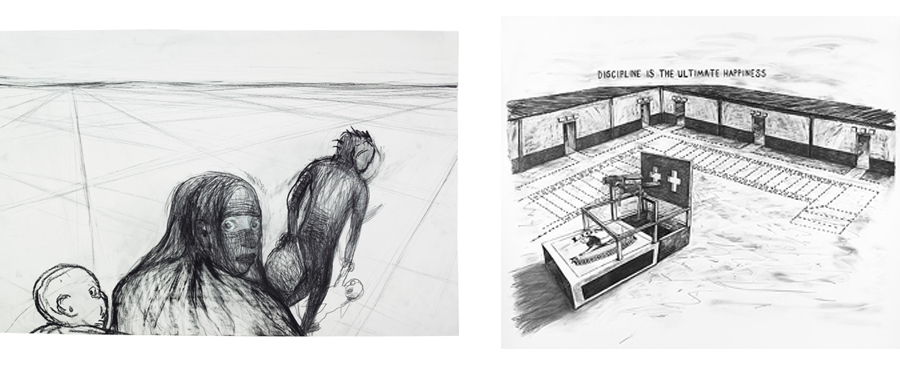
Miriam Cahn. andergrenze (2015). Banco de España Collection | Wendy Morris. Discipline is the Ultimate Happiness, 2017. Collection of the National Bank of Belgium
(Un)common Values confirms that art does not have a merely decorative function at our headquarters. Our collections have never shied away from incorporating art works that invite us to think with an open mind. On addressing some of the darkest periods in history, some works call into question the truth of official archives and dust off forgotten testimonies. Others cast doubt on the everyday images that surround us. Together, they invite us to look closer and provide a more nuanced, twofold perspective of the world. They awaken our curiosity and our desire to solve complex situations, and they do so in a poetic fashion.
The last room of Paix/Prix brings together artistic perspectives concerned with currency and trust. It is worth recalling that one of the purposes of central banks is to maintain economic stability and prevent the forging of banknotes. By bringing together the worlds of finance and culture, the BDE and NBB collections seek to reinforce common values in this unusual setting.
ARTISTS
[Banco de España]
Carlos Aires, Helena Almeida, Bleda y Rosa, Miriam Cahn, Willie Doherty, Daniel García Andújar, Gusmão y Paiva, Candida Höfer, Cristina Iglesias, Alfredo Jaar, María Loboda, Rogelio López Cuenca, Jonathan Monk, Aleix Plademunt, Gonzalo Puch, Sara Ramo, Francesc Ruiz, Wolfgang Tillmans, Ignacio Uriarte y Eulàlia Valldosera
Guy Bleus, Michaël Borremans, Peter Buggenhout, Jacques Charlier, Johan Creten, Aleksandra Chaushova, David Claerbout, Els Dietvorst, Carmen Dionyse, Honoré δ’O. Paul Duhem., Vincent Geyskens, Olivia Hernaïz, Emilio López-Menchero, Marcel Mariën, Jacqueline Mesmaeker, Wendy Morris, Auwera y Ria Verhaeghe
